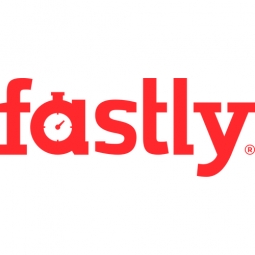Technology Category
- Application Infrastructure & Middleware - Event-Driven Application
- Cybersecurity & Privacy - Application Security
Applicable Industries
- National Security & Defense
- Oil & Gas
Use Cases
- Supply Chain Visibility
- Tamper Detection
Services
- System Integration
About The Customer
Betterment is an online financial advisor with more than $14 billion in assets under management. The company supports a user base of over 380,000 customers who access its online platform. To cater to this large user base, the company spins up numerous web servers daily through its continuous integration and deployment (CI/CD) pipeline. The company's Engineering and Security teams were previously concerned about the signal-to-noise ratio in their legacy WAFs and needed a solution that could scale automatically and accurately block attacks without increasing support call volume or creating additional work.
The Challenge
Betterment, an online financial advisor with over $14 billion in assets under management and a user base of over 380,000 customers, needed a solution to protect customer PII and financial assets. The company required a solution that could automatically scale and block attacks without impacting performance or requiring ongoing signature tuning. The company's Engineering and Security teams were particularly concerned about the signal-to-noise ratio based on their previous experience with legacy WAFs. It was crucial for them to find a WAF that could scale automatically and accurately block attacks without increasing support call volume or creating additional work for the Engineering or Security teams.
The Solution
Betterment adopted Signal Sciences to reduce the workload of its Security team by automating deployment and updates, and providing quick access to informed insights without compromising performance. To provision Signal Sciences, Betterment’s Operations team wrote a simple Ansible playbook. This ensured that any new application instance would automatically have Signal Sciences modules and agents installed as a part of its CI/CD pipeline. Signal Sciences provided robust security coverage that could block malicious requests without impacting the performance and availability of the application. The solution also offered easy-to-use dashboards that provided visibility, surfacing any detected vulnerabilities and reporting them to the respective team for timely remediation. Betterment also used Power Rules to prevent attacks against their unique application logic and keep financial data safe.
Operational Impact
Quantitative Benefit

Case Study missing?
Start adding your own!
Register with your work email and create a new case study profile for your business.
Related Case Studies.

Case Study
Taking Oil and Gas Exploration to the Next Level
DownUnder GeoSolutions (DUG) wanted to increase computing performance by 5 to 10 times to improve seismic processing. The solution must build on current architecture software investments without sacrificing existing software and scale computing without scaling IT infrastructure costs.

Case Study
Remote Wellhead Monitoring
Each wellhead was equipped with various sensors and meters that needed to be monitored and controlled from a central HMI, often miles away from the assets in the field. Redundant solar and wind generators were installed at each wellhead to support the electrical needs of the pumpstations, temperature meters, cameras, and cellular modules. In addition to asset management and remote control capabilities, data logging for remote surveillance and alarm notifications was a key demand from the customer. Terra Ferma’s solution needed to be power efficient, reliable, and capable of supporting high-bandwidth data-feeds. They needed a multi-link cellular connection to a central server that sustained reliable and redundant monitoring and control of flow meters, temperature sensors, power supply, and event-logging; including video and image files. This open-standard network needed to interface with the existing SCADA and proprietary network management software.

Case Study
Refinery Saves Over $700,000 with Smart Wireless
One of the largest petroleum refineries in the world is equipped to refine various types of crude oil and manufacture various grades of fuel from motor gasoline to Aviation Turbine Fuel. Due to wear and tear, eight hydrogen valves in each refinery were leaking, and each cost $1800 per ton of hydrogen vented. The plant also had leakage on nearly 30 flare control hydrocarbon valves. The refinery wanted a continuous, online monitoring system that could catch leaks early, minimize hydrogen and hydrocarbon production losses, and improve safety for maintenance.






